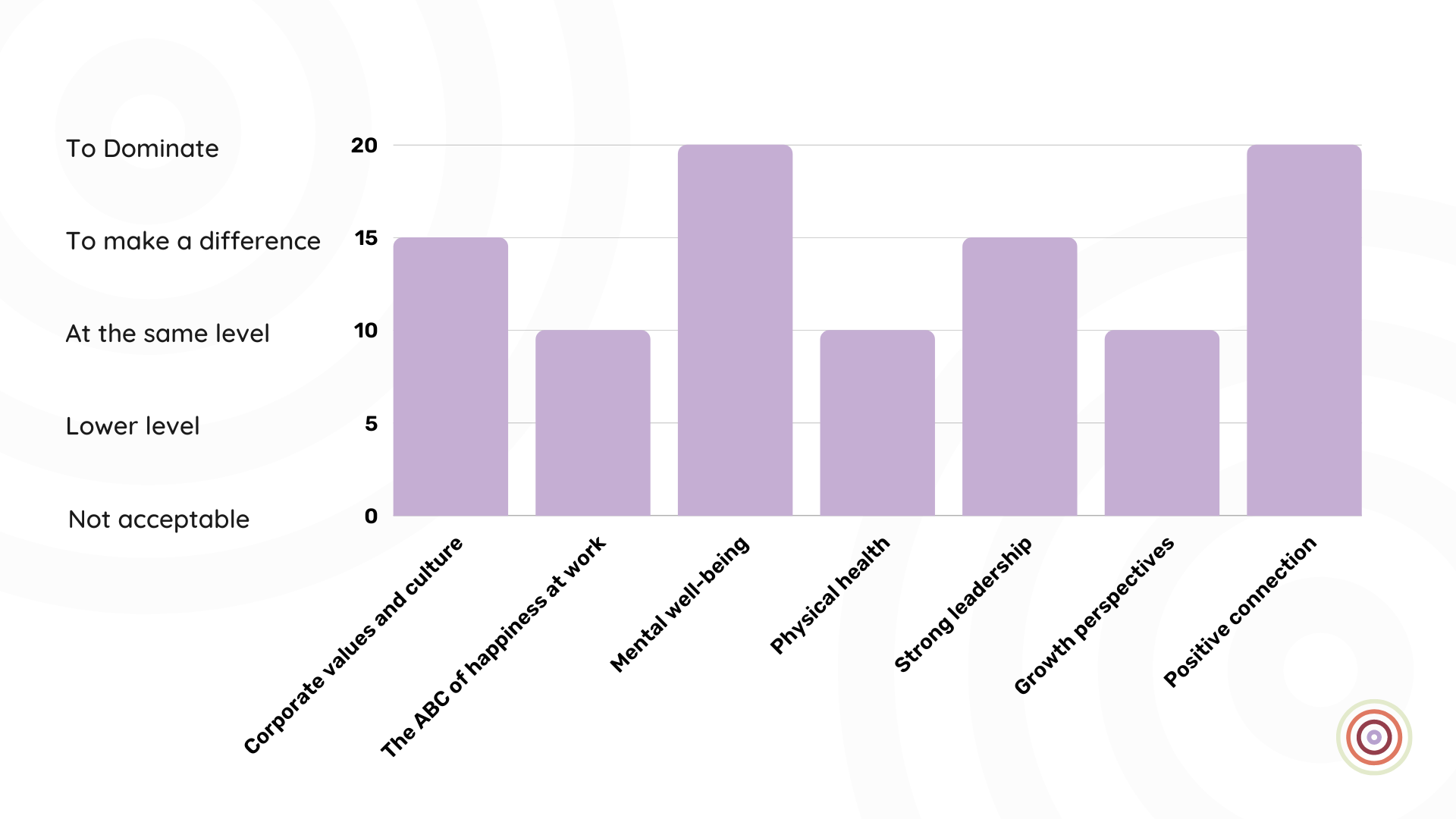Have you ever wondered how to get started with defining your wellbeing strategy? How do you start, what choices do you make, how do you make sure your choices contribute to your goals?
As you know by now, at The Circle of Wellbeing we work around 7 Wellbeing pillars. You can find them extensively on this website. However, as an entrepreneur or manager, you have probably understood by now that it is impossible to tackle them all at the same time, because your business keeps running in the meantime.
Moreover, that raises the question: how do you determine where you should focus on, which priorities to set?
One interesting option, which we also apply ourselves, is to base yourself on the model of Crawford & Mathews (2001), which is often used in determining business strategies to shape the value proposition for your customers. And your employees, those are your internal customers, aren’t they?
For those who want to get started with it themselves, we would like to give you a hint. Here is how to tackle it:
1. Use the 7 pillars as value elements, because those are the elements with which you can create value for your employees.

2. Determine in which pillar you want to dominate. This means that you really want to be the ‘best in class’ in that domain, so that candidates and employees use you as a reference when they talk about the ‘prime example of …’.
3. Determine in which pillar your organization wants to differentiate itself. Your ambition is not to be the absolute best, the reference in that pillar, but to belong to the top 3 when you compare yourself to other companies in your sector.
4. If you have made those choices, it automatically means that for the other pillars, you start looking for what is needed to be competitive. What is the minimum expectation of candidates and employees and what can you already do to meet those expectations?
What are the main advantages of this model?
- You are forced to make clear choices and limit the initiatives you take subsequently. In this way, the implementation of your wellbeing policy remains feasible and manageable.
- It allows you to clearly communicate internally where you want to stand for as an organization, what you consider important with a view to ensuring the well-being of your employees. It allows you to communicate in a simple and transparent way, which undeniably has a positive effect on creating buy-in and recognition among your employees.
Give it a try, you will notice that this approach brings peace to both the boardroom and your organization and will allow you to quickly celebrate great successes.
Good luck with it!
